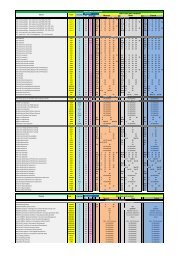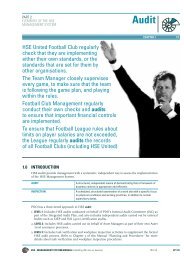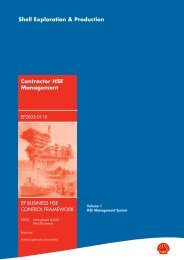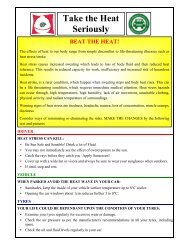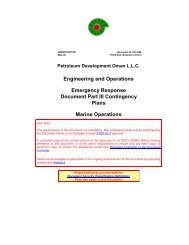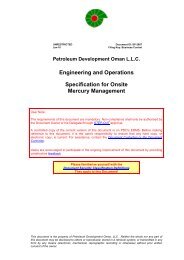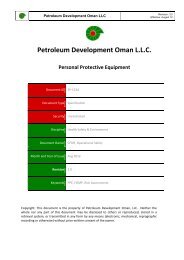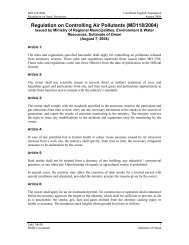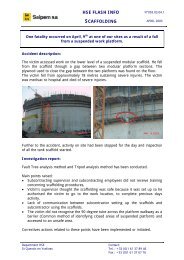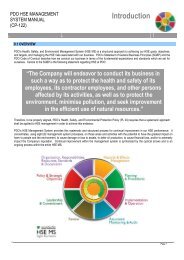Estate Service Asset - PDO
Estate Service Asset - PDO
Estate Service Asset - PDO
You also want an ePaper? Increase the reach of your titles
YUMPU automatically turns print PDFs into web optimized ePapers that Google loves.
Petroleum Development Oman<br />
<strong>Estate</strong> <strong>Service</strong>s <strong>Asset</strong><br />
Environmental Assessment<br />
2002 Review and Update<br />
5.9.6 Cetaceans<br />
The toothed cetaceans and the Baleen Cetaceans are both found in the waters of<br />
Oman. The toothed cetaceans (suborder Odontoceti) are a more varied group of<br />
cetaceans and include the sperm whale Physeter spp. and dolphins and porpoises. The<br />
species include sperm whale (Physeter macrocephalus), dwarf sperm whale (Kogia<br />
simus), Cuviers beaked whale (Ziphius caviostris), false killer whale (Pseudorca<br />
crassidens), killer whale (Orcinus orca), indo-pacific humpback dolphin (Sousa<br />
chinensis), Risso’s dolphin (Grampus griseus), bottlenose dolphin (Tursiops<br />
truncatus), pantropical dolphin (Stenella attenuata), spotted dolphin, spinner dolphin<br />
(Stenella longirostris) and common dolphin (Delphinus delphis).<br />
The baleen whales (suborder Mysticeti) filter feed on zooplankton using comb-like<br />
plates of baleen or “whalebone” with which they sieve their prey from large volumes<br />
of water. Oman's baleen cetaceans are all large whales and belong to one family, the<br />
Balaenopteridae. They include humpback whale (Megaptera novaeangliae), Bryde’s<br />
whale (Balaenoptera edeni), sei whale (Balaenoptera borealis), minke whale<br />
(Balaenoptera acutorostrata), blue whale (balaenoptera musculus) and fin whale<br />
(Balaenoptera physalus).<br />
5.9.7 Coral Reefs<br />
Most of the coast has unstable, sandy substrates with often high turbidity, making it<br />
largely unsuitable for coral growth. The rocky promontory of Ra's Sawadi and the<br />
Dimaniyat Islands located offshore are the only areas in the region with good coral<br />
development. The Dimaniyat Islands are situated 16 km offshore in clear, oligotrophic<br />
water and substantial patch and fringing reefs are found along leeward and protected<br />
shores of the nine islands in the chain. Abundant coral growth is found to 20 m depth.<br />
There are massive Porites colonies, Acropora colonies and large stands of<br />
Pocillopora on rubble substrates. The reefs here provide habitat and feeding ground<br />
for many fish. With the importance of these islands to nesting turtles (the hawksbill<br />
Eretmochelys imbricata and green turtle Chelonia mydas) and seabirds, the area was<br />
declared as the “Dimaniyat Islands Nature Reserve” in 1996 (RD 23/96).<br />
With specific reference to MAF bay, the recent studies has indicated hard corals<br />
around the Fahal Island with about 45% cover. Soft corals are seen in the West<br />
Headland and East Headland sites with about 20% cover and with low cover (



